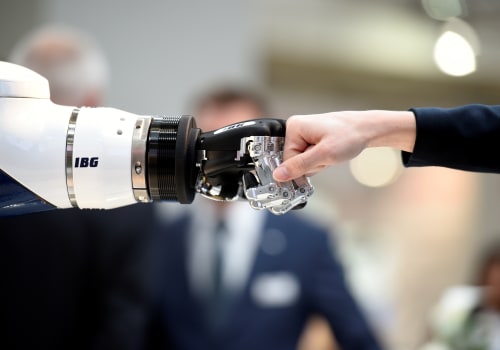The service industry is increasingly turning to artificial intelligence (AI) to improve customer interactions and provide better customer service. AI can be used to automate customer service inquiries, analyze customer reviews, identify customer emotions, and more. In this article, we'll explore some of the most common uses of AI in the service industry and how it can benefit businesses. Many well-known restaurant brands around the world have started using AI to improve customer interactions.
For example, an AI chatbot could offer menu recommendations, answer customer questions, or help them make dinner reservations. Artificial intelligence makes conversational artificial intelligence possible. AI is the automated part of a support process, while conversational AI is the “conversational” part of the interaction. One of the most common uses of AI in customer service are customer service chatbots.
Companies use chatbots for a variety of reasons, with the automation of customer service interactions being the first. Support teams use chatbots to automate the most repetitive and redundant customer service inquiries. This includes information for routine questions about personal accounts, order status and use of products or services, and much more, depending on the company sector. AI can help improve self-service rates; the customer self-service rate refers to the rate at which customers can identify and find the assistance they need without depending on a customer service agent.
With the help of AI, customers can consult the chatbots that automatically produce the information they are looking for. The right artificial intelligence tool for customer service is integrated into the support service of a support agent and learns from a company's historical data, including previous tickets, the company's internal wikis, external knowledge bases, agent notes and more. This information helps customers to address their needs on their own and to obtain the information they need without the interference of agents. With the rise of technology that is increasingly used in customer service, the technology being used is becoming more and more intelligent. Nowadays, we can use AI to help analyze customer reviews and identify how a customer feels when requesting a customer service ticket.
The right AI tool can recognize when a customer is upset, angry, happy, or neutral, allowing the right agents to resolve those queries. The right customer service AI tools are based on machine learning and natural language processing (NLP), which work together to analyze data and accurately produce information for customers. As mentioned, artificial intelligence works together with other technologies to make chatbots and automated interactions with customers possible. One of these technologies that goes hand in hand with AI is natural language processing (NLP). Natural language processing is a branch of artificial intelligence that uses machine learning algorithms to help computers understand natural human language.
As important as NLP is machine learning (ML). Machine learning makes it possible for an AI application to learn and improve from experience without explicit programming. Machine learning is what allows for continuous improvement, which is very important in customer service. With this technology, AI helps chatbots to improve.
As AI learns, responses to customer needs improve and automated responses become even more consistent and concise. There are many examples of AI that companies can start with now. Support teams can use AI to automate ticket tagging, automate ticket creation, improve self-service, use machine learning and natural language processing (NLP), automate responses to emails, and take advantage of all company knowledge and data. When support teams implement the right AI platform solution, they can improve both the customer experience and the agent experience at the same time. For example, AI could be used to analyze social media posts and identify patterns related to customer needs. This helps companies to better understand the needs of their customers and to provide them with more personalized services.
MonkeyLearn is an artificial intelligence platform that analyzes texts using inherent, no-code software. It also offers a survey analyzer to separate customers and their responses. As a result, it creates innovative machine learning frameworks to understand the behavior, keywords, and topic that interest users. Therefore, these capabilities help them rank their solutions as the best examples of AI as a service. AI continues to make significant improvements to the biometric recognition capabilities of machines, especially when it comes to challenging lighting conditions, angles and backgrounds.
Using biometrics, agents can recognize customers and greet them in a personal way. Businesses can use biometrics to verify warranties and ensure that customers receive service for their devices without the need to keep receipts or other documentation. Agents representing financial institutions or insurance companies can use biometric data to quickly authenticate customers while minimizing the risk of fraud. As biometrics becomes more reliable and cost-effective, more companies can be expected to take advantage of its benefits. For example, technology can identify patterns that indicate a customer's intention based on web activity or text and direct the call or chat to the appropriate agent.
Predicting intentions allows care centers to improve their skills by providing customers with the assistance they need the way they want. Emotion analysis analyzes the verbal and non-verbal communication of an individual to understand their mood or attitude. For example, if someone smiles and nods their head, they're probably happy, while if someone has wide eyes and their mouth open, they'll probably be surprised. Emotion analysis can be used to rank a customer's mood with the right priority and direct them to the right agent. For example, an angry customer could be directed to the customer retention team, while a satisfied and satisfied customer could go to the sales team to propose a new product or service. Emotion analysis generates data that can then be used to understand a customer's experience with a product, a new packaging or the interaction with a company representative, as well as to discover any weak points that cause negative reactions in customers. Major companies such as Apple, Microsoft, Facebook, Disney and Google are actively participating in the race to create virtual assistants and chatbots that can answer customer inquiries and expand quality customer service powered by artificial intelligence.











